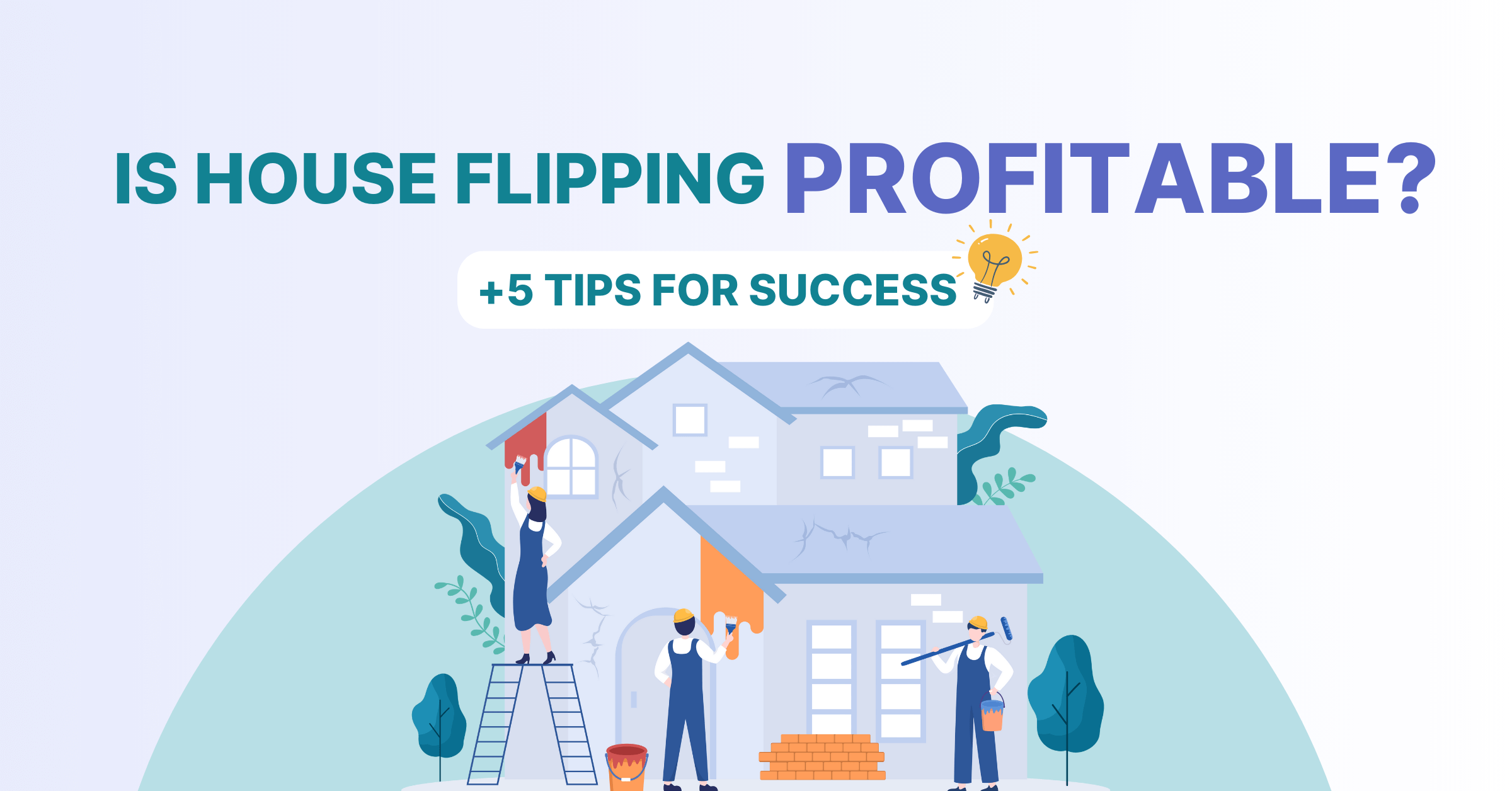Disclaimer: PropStream does not offer investing advice or make profit promises. This article is for educational purposes only. We recommend consulting financial professionals and/or doing your due diligence before flipping U.S. real estate.
|
Key Takeaways:
|
U.S. house flipping margins are shrinking, but that doesn’t mean you can’t still find great deals. With the right real estate data and tools, you can outperform the average flip.
In this article, we’ll explore the current flipping market, regional differences, and how investors can adapt to find hidden opportunities, motivated sellers, and eager buyers.
Table of Contents |
House Flipping Volume Falls Nationwide
In Q1 2025, 67,394 single-family homes and condos were flipped, the lowest level since 2018.
Try PropStream for 7 Days Free!
Meanwhile, home flips as a share of total sales reached 8.3%, up from 7.4% the previous quarter but down from 8.7% last year. Furthermore, the share was down year-over-year in two-thirds of metro areas with sufficient data to analyze.
The smallest proportion of flips was in Honolulu, HI (4.7%), New Orleans, LA (4.9%), Seattle, WA (5.5%), Pittsburgh, PA (5.9%), and Portland, OR (6.1%).
Shrinking Flipping Profits to Blame?
%20(1).jpg?width=1252&height=834&name=flipping%20profits%20(2)%20(1).jpg)
Part of the reason flipping activity is slowing may be shrinking profit margins.
In Q1 2025, the typical investor paid $260,000 for a home and sold it for $325,000. That’s a gross profit of $65,000 (before accounting for expenses), which is a significant drop from the $70,000 gross profit margin the previous quarter.
Meanwhile, the typical flipped home netted a 25% gross return, down from 28% the previous quarter and 48.8% in the fall of 2020. Areas with the lowest gross returns were Austin, TX (1%), Dallas, TX (3.7%), Houston, TX (5%), Salt Lake City, UT (6.5%), and San Antonio, TX (6.9%).
What This Means for Real Estate Investors
Lower flipping volume and shrinking profits mean more investors are chasing a smaller pool of viable deals. This can intensify competition, drive up prices, and squeeze margins even further.
Plus, it can make deals more sensitive to rising renovation costs (labor, materials, etc.) and rising holding costs (mortgage payments, property taxes, utilities, etc.)
To survive (and even thrive) the market shift, you must rely on real estate data that can tell you which deals to skip and where the opportunities are.
How to Find Hidden Deals, Motivated Sellers, and Eager Buyers with PropStream
Fortunately, there’s an easy way to access nationwide real estate data: PropStream it!
Our platform aggregates data from multiple listing services (MLSs), public records, and other sources to give you the most comprehensive set of data on U.S. properties and their owners.
Here’s how PropStream can help you navigate the current downturn in the flipping market:
Find Off-Market Inventory and Motivated Sellers
With PropStream, you can identify properties not currently for sale but with owners who may be motivated to sell. For example, if the property is in poor condition or the owner is struggling financially, they may be eager to get it off their hands.
Choose a market and then filter properties using one of PropStream’s Lead Lists (e.g., Pre-Foreclosure, Bankruptcy, Vacant, Zombie Properties, Upside Down, Pre-Probate, and more). You can also use PropStream Intelligence to filter properties by condition and foreclosure factor (how likely a property is to be foreclosed on).
Estimate Renovation Costs and After-Repair Value (ARV)
%20(1).jpg?width=1252&height=834&name=flipping%20profits%20(3)%20(1).jpg)
PropStream also has a built-in Rehab Calculator that lets you quickly estimate renovation costs.
From there, you can research comparable properties’ sales histories (aka “comps”) to estimate the subject property’s after-repair value (ARV). This will help you determine what to offer and whether the upfront investment (purchase price plus renovation and holding costs) is worth it.
Identify Potential Investor Buyers
After renovating a property, you can use PropStream’s data to find rental property owners who may want to buy the flipped property.
For example, you can search for owners who own a minimum number of properties, are linked to other properties, or have a history of buying with cash.
By advertising and selling your flip to such investors, you can cut down on the time it takes to market your flips (saving on marketing and holding costs), and they get to acquire a turnkey property that’s ready for tenants. It’s a win-win.
Common Mistakes to Avoid
Even with the best data, you may make mistakes. Here are some common pitfalls to avoid:
- Overestimating (ARV). Overly optimistic comps can inflate your ARV projections, leading to unrealistic expectations that hurt your final returns.
- Underestimating renovation and holding costs. Get bids from contractors and utility companies to ensure you have an accurate picture of renovation and holding costs.
- Chasing hot markets without a strategy. Jumping into an oversaturated or highly competitive market without a clear plan or local insights can be a recipe for failure.
- Ignoring local real estate regulations. Skipping due diligence on local building codes, permitting, and HOA rules can delay renovations and add unexpected costs.
Start Your Free PropStream Trial Today
Whether you’re an experienced flipper or just getting started, staying ahead of the competition in today’s market means making smarter, data-driven decisions.
PropStream gives you the tools to uncover hidden opportunities, analyze deals faster, and connect with the right sellers and buyers—all on one platform.
Try PropStream for 7 Days FREE—Enjoy 50 Complimentary Off-Market Leads
Frequently-Asked Questions (FAQs)
Is house flipping profitable in today’s market?
Yes, it can be. However, with tighter margins and more competition, it’s crucial to analyze deals carefully and control both renovation and holding costs to stay profitable. Pursuing off-market properties can help you find opportunities for below-market value.
What are the best property flipping strategies?
Top strategies include pursuing off-market properties from motivated sellers, using real estate data to analyze ARV and rehab costs, and selling to investor buyers for faster closings.
What’s the best real estate data software for finding flipping leads or off-market properties?
PropStream is one of the best tools for finding flipping leads, offering nationwide property data, lead filters, comps, rehab calculators, and buyer insights—all in one platform.
What types of properties can I find on PropStream?
You can find a range of off-market properties using PropStream, including:
- Single-family
- Multi-family
- Vacant land
And more!
Visit our features page to learn more.
Subscribe to PropStream's Newsletter
Notes on data:
All flipping market data taken from ATTOM.


